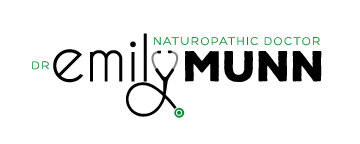Male Factor Infertility
While I usually write about women’s health, when it comes to infertility, we have to talk about men’s health too! Studies show that about 40% of the time, infertility is a result of female factors, 40% of the time it is male factors, and 20% is unknown or unexplained. So, male factor infertility is just as important, yet often overlooked. If you are struggling to get pregnant, it may be time for your male partner to have a fertility health evaluation too!
A fertility health evaluation for men is a bit more straight forward than it is for women as men are generally less complicated than women (from an anatomy sense).
Sperm are being produced all the time (about 1000 sperm per heartbeat!).
This makes treatment a bit easier too as we can influence sperm health along its maturation cycle. It takes on average 90 days for sperm to mature allowing ample time to elevate a man’s health with some key evidence-based antioxidant support.
Studies on sperm DNA fragmentation show us that antioxidants support healthy sperm and thus improves fertility. Since sperm throughout the maturation cycle are highly sensitive to what we call reactive oxidant species (ROS) or oxidative damage, anti-oxidants through nutrition and supplementation can improve the final mature sperm and its function - motility, viability, capacitation, and acrosome reaction (sperm penetrating the ovum/egg). Antioxidants mop up or neutralize ROS molecules to prevent their damaging effects. There are two ways a male can improve his sperm health. 1) decrease causes of oxidative damage and 2) consume the right protective antioxidants.
Causes of Oxidative Damage and Poor Sperm Health (1)
Increased BMI/obesity
Poor Diet
Aging
Infection of male reproductive organs
Cancer
Pollution, toxins & radiation
High intake of caffeine
Recreational drugs & medications
Varicoceles
Increased testicular temperature (tip: boxers over briefs)
Smoking
Stress
Alcohol
Infrequent ejaculation
Dietary Sources of Antioxidants (2,3)
Vitamin C: bell peppers, strawberries, broccoli, pineapple, papaya, kiwi, oranges, cantaloupe, kale, cauliflower
Vitamin E: spinach, swiss chard, sunflower seeds, almonds, asparagus, bell peppers, papaya, kale
Zinc: spinach, mushrooms, organic lamb, organic beef, scallops, oysters, sesame seeds, raw pumpkin seeds, oats, green peas
Selenium: halibut, tuna, cod, shrimp, mushrooms, mustard seeds, sardines, salmon, turkey, barley, brazil nuts
Folic acid/folate: Lentil beans, pinto beans, garbanzo beans, asparagus, spinach, black beans, navy beans, kidney beans, dark leafy greens
Vitamin B12: Organ meats, eggs, organic dairy products, nutritional yeast
CoQ10: Organic beef, herring, rainbow trout, salmon, organ meats, peanuts, pistachios, sesame seeds, raw broccoli, strawberries, oranges, eggs, whole grains
L-carnitine: Seeds, nuts, artichokes, asparagus, beet greens, broccoli, brussel sprouts, collard greens, mustard greens, okra, parsley
Evidence-Based Antioxidant Supplements for Improving Sperm Health (1,4,5)
Vitamin C
Vitamin E (mixed tocopherols)
Beta carotene
Vitamin B12 (methylcobalamin)
Zinc
Selenium
Folic acid or folate
Co-enzyme Q10 (ubiquinol)
Alpha lipoic acid
L-carnitine
N-acetyl cysteine
Omega 3 fatty acids
This appears to be a long list, however, working with an integrative naturopathic doctor can highlight the key supplements that are right for YOU given your complete health history and certain lab tests. Some supplements are also formulated as a network of antioxidant support in one capsule and there are good whole food men’s multivitamins as well. B12 shots and other vitamin injections may also be beneficial.
References:
Shaw, Alana. Explaining Unexplained Infertility. Institute of Women's Health & Integrative Medicine. Oct 2016 conference.
World's Healthiest Foods - http://www.whfoods.com
http://www.fssc.com.au/sperm-dna-fragmentation/
Giahi et al. Nutr Rev. 2016 Feb;74(2):118-30. doi: 10.1093/nutrit/nuv059. Epub 2015 Dec 24.
Talevi R et al. Reprod Biol Endocronil. 2013 Aug 16;11:81. doi: 10.1186/1477-7827-11-81.
Abad et al. Andrologia. 2013 Jun;45(3):211-6. doi: 10.1111/and.12003.

